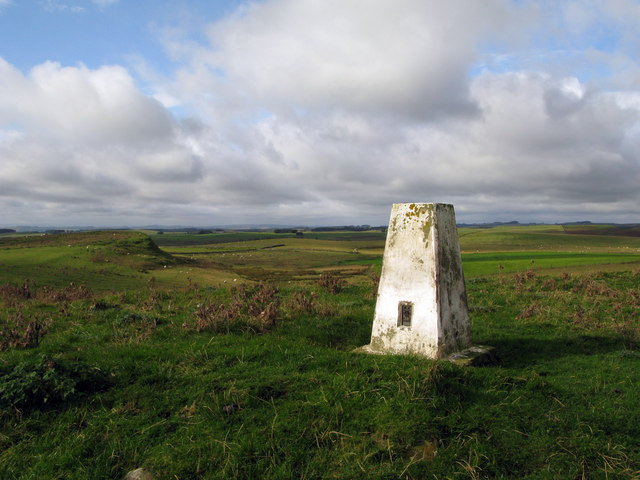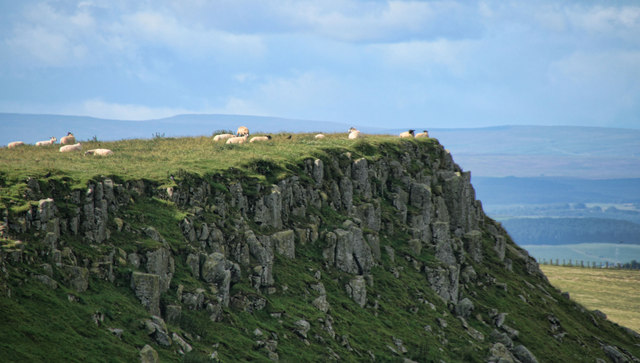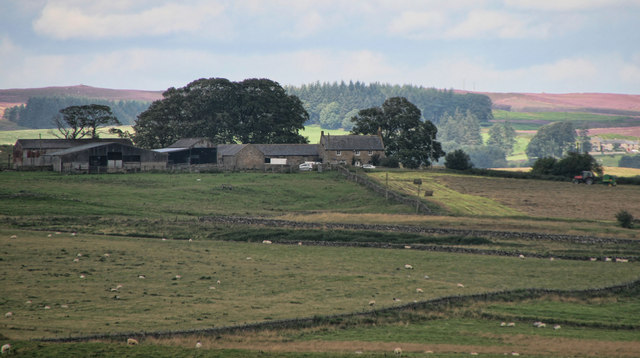Roger's Hole
Lake, Pool, Pond, Freshwater Marsh in Northumberland
England
Roger's Hole

Roger's Hole is a picturesque freshwater marsh located in Northumberland, England. Situated amidst the rolling hills and lush greenery of the region, it is a haven for nature enthusiasts and a popular spot for outdoor activities. The site is primarily known for its exceptional natural beauty and diverse aquatic ecosystem.
Covering an area of approximately 10 acres, Roger's Hole is formed by a natural depression in the landscape that has filled with water over time. The water source predominantly comes from rainfall, creating a serene and tranquil environment. The marsh is surrounded by dense vegetation, including reeds, grasses, and shrubs, providing a perfect habitat for a wide variety of flora and fauna.
The water in Roger's Hole is crystal clear and teeming with life. It supports a diverse range of aquatic plants such as water lilies, reed mace, and marsh marigolds, which add vibrant colors to the landscape. The marsh is home to numerous species of birds, including herons, ducks, and swans, which can often be spotted gliding gracefully across the water or nesting in the surrounding trees.
Visitors to Roger's Hole can enjoy a range of activities such as birdwatching, fishing, and picnicking. The site offers several well-maintained walking trails, allowing visitors to explore the marsh and its surroundings at their own pace. The peaceful ambiance and stunning natural scenery make it an ideal place for relaxation and escape from the hustle and bustle of everyday life.
Overall, Roger's Hole is a hidden gem in Northumberland, offering a delightful blend of natural beauty and tranquility. Its rich biodiversity and serene atmosphere make it a must-visit destination for nature lovers and those seeking a peaceful retreat in the heart of the English countryside.
If you have any feedback on the listing, please let us know in the comments section below.
Roger's Hole Images
Images are sourced within 2km of 55.133492/-2.0462393 or Grid Reference NY9782. Thanks to Geograph Open Source API. All images are credited.
![Disused limestone quarry, north of Quarry House "Firstly, at the east of this part of the area, is a limekiln [site 12] which is also marked on the Thockrington Tithe Map of 1844. No kiln is marked on the site in the Second Edition Ordnance Survey Map (1898) - indicating that it was disused by that date - but the map indicates a quarry adjacent and to the east of the site of the limekiln. This quarry would have been the source of limestone when the kiln was operating. Today, the limekiln appears only as a grassy mound, although the ramp which was used for loading the kiln is evident on the south side. No arch (from which the lime was drawn) is now visible, but it is likely that at least one drawing arch was originally located at the foot of the north side of the kiln, facing the modern tarmac road."
A Field Survey at Quarry House and North Heugh Farms, Northumberland.
P.C. Sellers and D.H. Prothero (1991). Northern Archaeology Vol.11 p.57-72.](https://s2.geograph.org.uk/geophotos/07/40/29/7402902_73839b2c.jpg)



Roger's Hole is located at Grid Ref: NY9782 (Lat: 55.133492, Lng: -2.0462393)
Unitary Authority: Northumberland
Police Authority: Northumbria
What 3 Words
///unimpeded.armrests.tapers. Near Corsenside, Northumberland
Nearby Locations
Related Wikis
Bavington Crags
Bavington Crags is a Site of Special Scientific Interest (SSSI) in north Northumberland, England. The site is an outcropping of the Whin Sill which gives...
Sweethope Loughs
Sweethope Loughs are two freshwater lakes almost 1 mile (1.6 km) in length, the smaller one just east of the larger, in the southern part of Northumberland...
Thockrington
Thockrington is a village and former civil parish, now in the parish of Bavington, in Northumberland, England. The village lies about 10 miles (16 km)...
Little Harle Tower
Little Harle Tower is a Grade II* listed privately owned country house with 15th-century origins, located at Little Harle, Kirkwhelpington, Northumberland...
Kirkwhelpington
Kirkwhelpington is a village and civil parish in the English county of Northumberland about 13 miles (21 km) northeast of Hexham. It is on the River Wansbeck...
Bavington Hall
Bavington Hall is a 17th-century privately owned country house at Little Bavington in Northumberland. It is a Grade II* listed building.A tower house...
Knowesgate railway station
Knowesgate was a stone-built railway station with goods sidings in Northumberland, England on the Wansbeck Railway between Morpeth and Reedsmouth, which...
Kirkharle Hall
Kirkharle Hall was a country house at Kirkharle, Northumberland, England, the former seat of the Loraine family, now much reduced and in use as a farmhouse...
Nearby Amenities
Located within 500m of 55.133492,-2.0462393Have you been to Roger's Hole?
Leave your review of Roger's Hole below (or comments, questions and feedback).


















